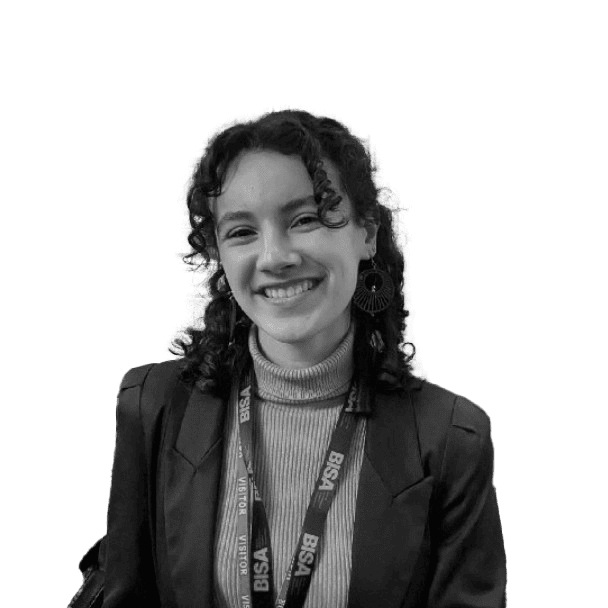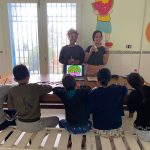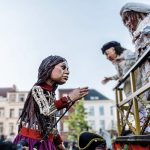Near the Turkey-Syria border in north-western Syria lies Al Nouri refugee camp. Founded in 2020, Al Nouri, which translates to “my light” in English, houses around 100 families. Far less crowded than your typical refugee residence, this camp emits an almost tranquil allure. But what truly separates this centre from others is the nature of its inhabitants, a notable proportion of whom are blind or visually impaired.
The camp is run by 50-year-old Abu Mahmoud. Like many of his neighbours, Mahmoud lost his vision as a child. He runs the centre as a tight-knit community, connecting with refugees from young to old, at once managing the centre and acting as their confidant.
Through the collaboration and spirit of the centre’s residents, abled and impaired refugees alike engage in everyday social activities. Families gather for dancing at night and play football in the daytime The camp also has a market, a mosque, and a park for children to play. In a situation that is otherwise filled with indefinite instability, taking part in such mundane activities allows for the inhabitants to experience a sense of normalcy, and share moments of bliss and relaxation.
Perhaps the most remarkable part of this little community is the primary school. Run by and for the blind and visually impaired, volunteers, such as Waseem Riad Rahmon – an Imam at the camp’s local mosque – teach children how to read braille. They also learn to speak English and take Quranic studies.
Outside of school, the children play in the park or the streets just like others. With very few cars that pass by, and the help of sighted family members or friends, childhood milestones such as learning to ride a bike are now possible for children like Yazan Qassam. Yazan is ten years old; born blind and 70% hard of hearing, it has taken him a long time to learn how to ride a bike. However, since moving into Al Nouri, he has been able to cycle through the streets of the camp, and he does so with the most luminous smile on his face.
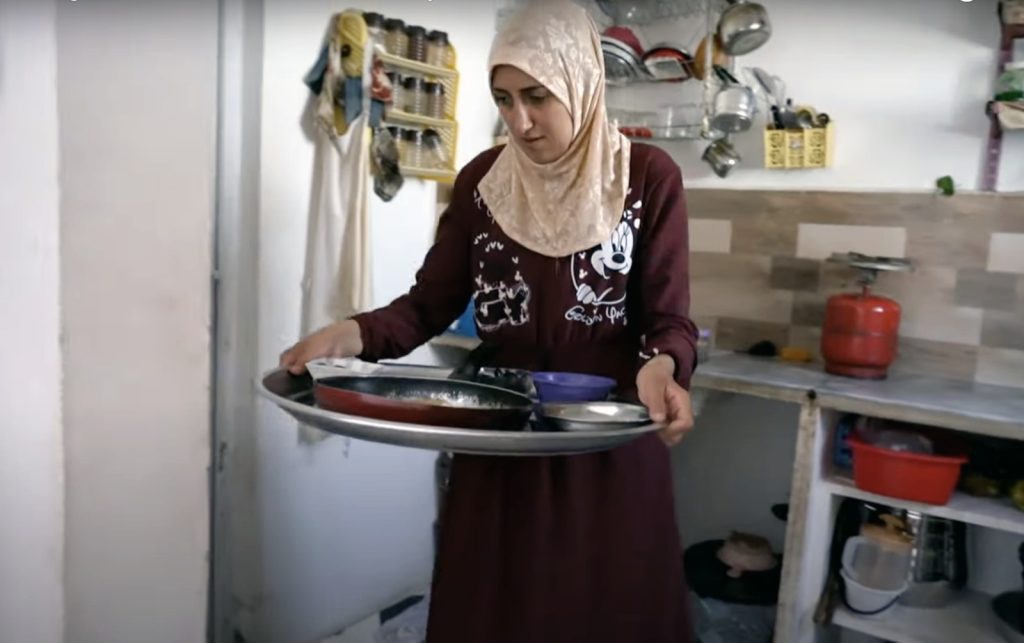
The centre’s residents find themselves here for a number of reasons. Many were born without sight, like Yazan. A number have been blinded as a result of the civil war. One of such cases is Ahmad al-Hamid – a war-wounded resident who went completely blind from an air strike in 2016 and was displaced several times before settling in Al Nouri last year.
Others develop blindness later on through hereditary diseases, including Sahar – a wife and mother whose impairment is getting progressively worse from not being able to afford treatment.
Although informed that a pregnancy would deteriorate her vision, Sahar absolutely wanted to become a mother. She now raises her two-year-old daughter, Rina, with her blind husband, Ayman. The couple needed others to describe what their daughter looks like to them, and to confirm that little Rina is indeed able to see.
Sahar uses her other senses, namely smell and touch, to cook for her family. Despite the fact that each family in the centre receives around 70 EUR per month to provide for basic needs, Ayman has chosen to work as a handyman around the camp. He relies on his sense of touch, through his fingers or his tongue, to sense the magnetic field of broken electronics, fixing anything from speakers to washing machines.
Ayman also keeps himself busy through his YouTube channel. With the help of other camp residents, he records videos to offer advice and information about blindness. His content includes tutorials on how to use different phone apps as a blind person, as well as videos to spread awareness on how the visually abled should best engage with the visually impaired.
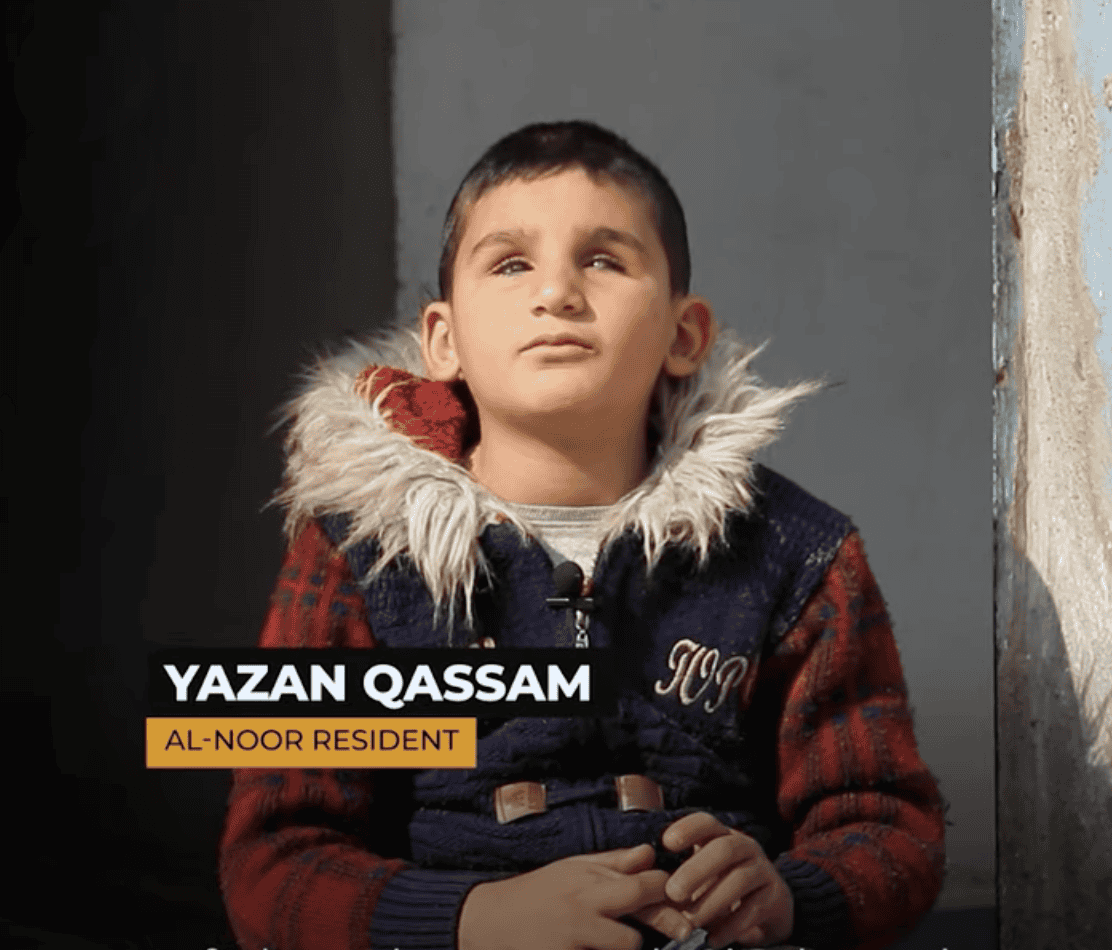
With one more obstacle than the average refugee, Al Nouri is committed to making its disabled population more independent. The camp has been specially designed to cater to its resident’s needs. The streets are spacious and lined with brick-laid bungalows rather than crowded, make-shift tents. The walls outside each home include braille signage and are adorned with unique 3D patterns, allowing for passers-by to trace their fingers and recognise where they are. This makes it easier for the blind to visit a neighbour, head to the market, or find their own way home.
Interior design has also been taken into account; floor-tiles inside of houses are textured differently to guide the blind from one room to another by the soles of their feet. These simple, yet often overlooked, considerations create all the difference, making it easier for the blind to navigate the camp by themselves and rely less on others.

Imam Rahmon explains how blind Syrians are eager to contribute to their society and provide for their families. The governorate of Idlib, where the camp is located, has around 3000 blind inhabitants. As of February 2024, only a small portion have been lucky enough to move into the camp. The others mostly live in tents in surrounding areas, under conditions which are often inadequate for their needs.
However, Al Nouri is slowly expanding. Through the funding of a Kuwaiti charity, new housing facilities are being built to accommodate more visually impaired Syrians and their families, who will hopefully benefit from the centre’s efforts to foster a space of equal opportunity and encourage self-reliance.
To learn more about the Al Nouri refugee camp, watch the 2023 reportage produced by ARTE here.
Nesreen Yousfi
